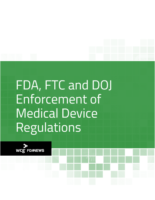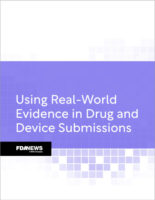
Home » New FDA Rule Requires Clearer Pregnancy, Lactation Risk Information on Product Labeling
New FDA Rule Requires Clearer Pregnancy, Lactation Risk Information on Product Labeling

The FDA is requiring drugmakers to revamp their product labeling to include clearer information on the safe use of drugs and biologicals in pregnant women and nursing mothers, marking the first labeling requirement of its kind since the late 1970s.
Under a final rule issued recently, drugmakers must now include three new subsections on labels to address risks associated with pregnancy, lactation and reproductive potential.
One of the most significant changes is the scrapping of the current lettering system — A, B, C, D and X —that has been used to classify a drug’s risk during pregnancy. The letter categories were too simplistic and widely misinterpreted, said Sandra Kweder, deputy director of CDER's Office of New Drugs.
To remedy that situation, the subsection on pregnancy will provide information on dosing and potential risks to the developing fetus, as well as information on any registry that collects data on the effects of the product. The lactation subsection will include information on the amount of drug in breast milk and potential effects on the breast-fed child. And the subsection on reproductive potential will include information on pregnancy testing, contraception and infertility as it relates to the drug. This information had been included in labeling, but there was no consistent placement for it until now, the FDA said.
The new rule will force companies to research existing medical literature to find relevant information for labeling, Kweder said, adding that such information often had been overlooked in the past. However, the new rule doesn’t mandate that companies conduct new preclinical and clinical studies to obtain the data if it’s not available, Kweder told reporters yesterday. When no data are available, manufacturers must indicate that on the labeling, she said.
The rule, which finalizes a 2008 draft and replaces rules that have in place since 1979, will take effect June 30, 2015, for new drugs and biologics, and will be phased in gradually for previously approved products.
The FDA also released an accompanying draft guidance that details new format and content requirements under the rule. For example, the pregnancy section must have four subheads on pregnancy exposure registry, risk summary, clinical considerations and data. The lactation section must have subheads on risk summary, clinical considerations and data. And the reproductive potential section must have subheads on pregnancy testing, contraception and infertility. Comments should be submitted by Feb. 2. — Jonathon Shacat
Originally appeared in Drug Industry Daily, the pharmaceutical industry’s number one source for regulatory news and information. Click here for more information.
Upcoming Events
-
14Apr
-
23Apr
-
25Apr
-
07May
-
14May
-
30May
